Keakie
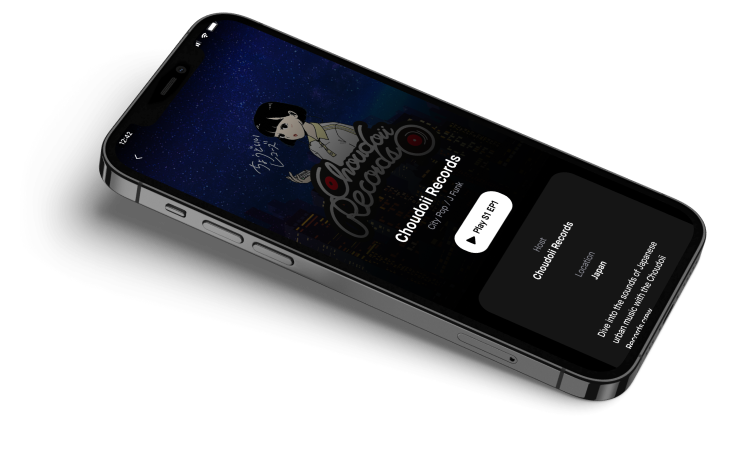

Joining Keakie as the inaugural UX/UI hire, I spearheaded the end-to-end design and experience for its Minimum Viable Product (MVP) across iOS and Android platforms. Collaborating in a lean Scrum setup with cross-functional stakeholders, we launched successfully in just four months, a testament to rapid alignment, high organisation, and agility. Given an unestablished user base, we adopted a Lean UX approach, rapidly defining problems, testing with internal audiences like DJs, mixers, and genre curators, and continuously iterating. Resource limitations meant adapting workflows and prioritising deliverables efficiently to move the needle.
Stakeholder interviews helped ground the product in meaningful context rather than pursuing an app for its own sake. Key insights included:
I wanted to get beyond this need to launch an app because that is a solution to an unknown problem. Whilst Keakie was not in a position to validate whether an app is the right thing to do, it was fundamental for me to understand why would a user choose us over Spotify or Apple Music? Are we attempting to reinvent a wheel that doesn't need to be touched? The questions and the dialogue went beyond the scope, the goals of the product and who is Keakie's audience. This stakeholder interview was the deeper context needed in order to shape how might we redefine how users discover music which in turn, would become Keakie's USP.
The app had an initial roadmap shaped by input from our key stakeholders, but we needed a shared starting point to align the entire team. To achieve this, we ran assumption-mapping sessions, capturing our best-informed guesses about user needs, product direction, and potential risks. By openly declaring these assumptions, we created space for collaboration and critical discussion—inviting music industry experts, curators, the CEO, and our CTO to challenge ideas, surface unknowns, and collectively define the problems we were solving and how best to approach them.
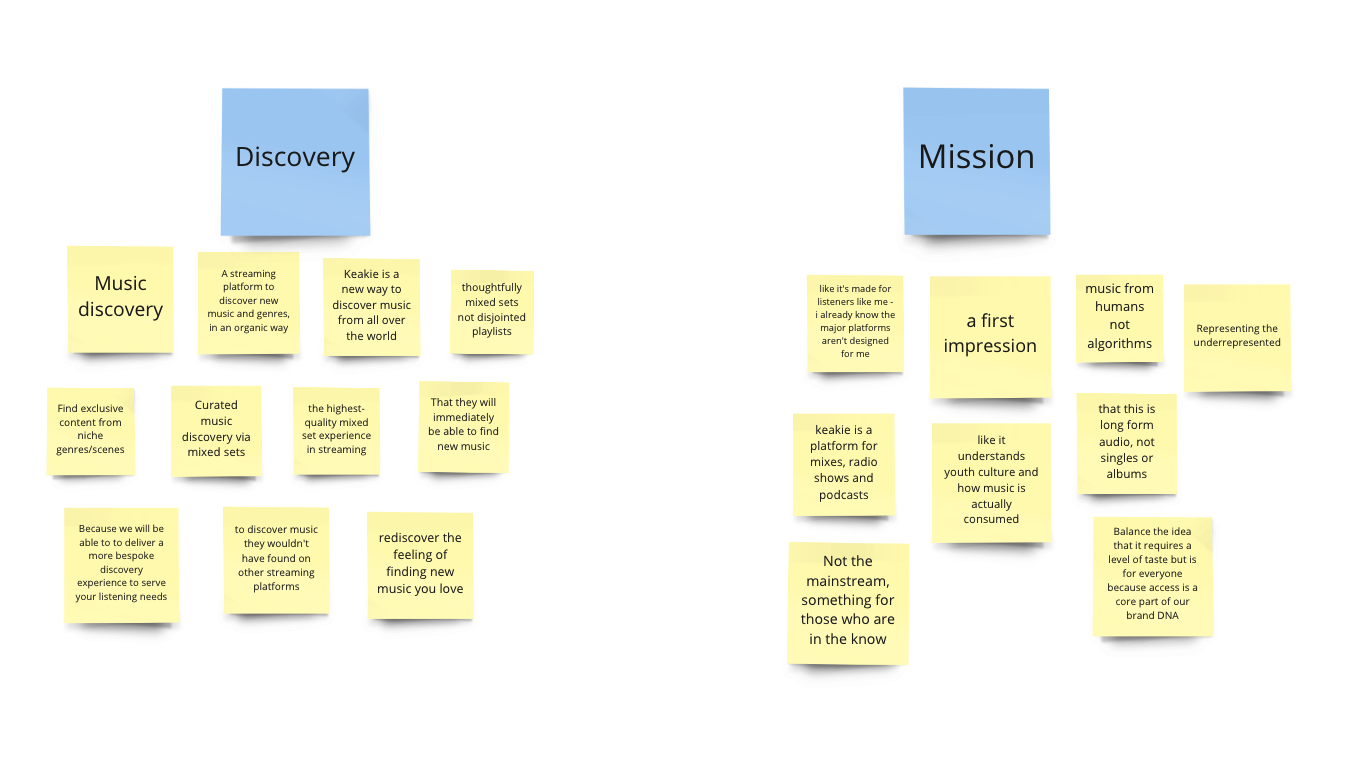
Once the team had aligned on priorities, my role was to turn those into tangible, actionable user stories. Each story was framed with clear acceptance criteria, giving our developers clarity while ensuring stakeholders understood exactly what success looked like. By agreeing on these criteria up front, we removed ambiguity and avoided surprises later in the process, whether in design critiques or when gathering user feedback.This approach not only kept the team focused, but also created a shared language that connected strategy, design, and execution—helping us move faster while staying aligned on what truly mattered for our users.
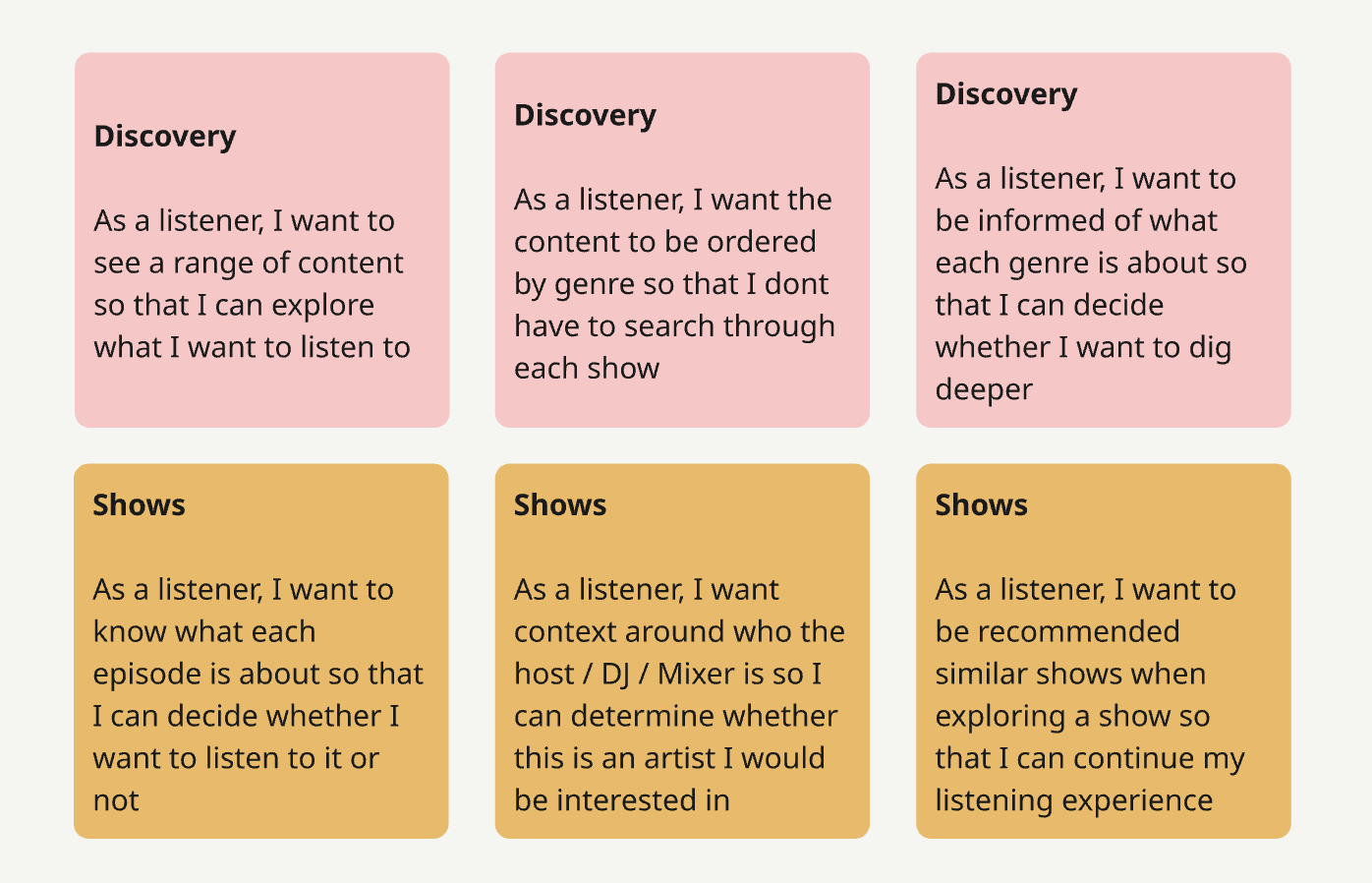
In the absence of formal user research at this early stage, I introduced proto-personas as a lightweight, flexible way to align the team on who we were designing for and the problems we were solving. Unlike traditional personas, which are often static and based on completed research, proto-personas evolve. They allowed us to move quickly, grounding our decisions in informed assumptions while staying open to change as we learned more about our users.These proto-personas became a shared reference point for the team, helping us prioritise features for the MVP and reminding everyone that we are not the end users. As new insights emerged, we revisited and refined them, ensuring our understanding of user needs stayed current and could eventually feed into a broader discovery phase.
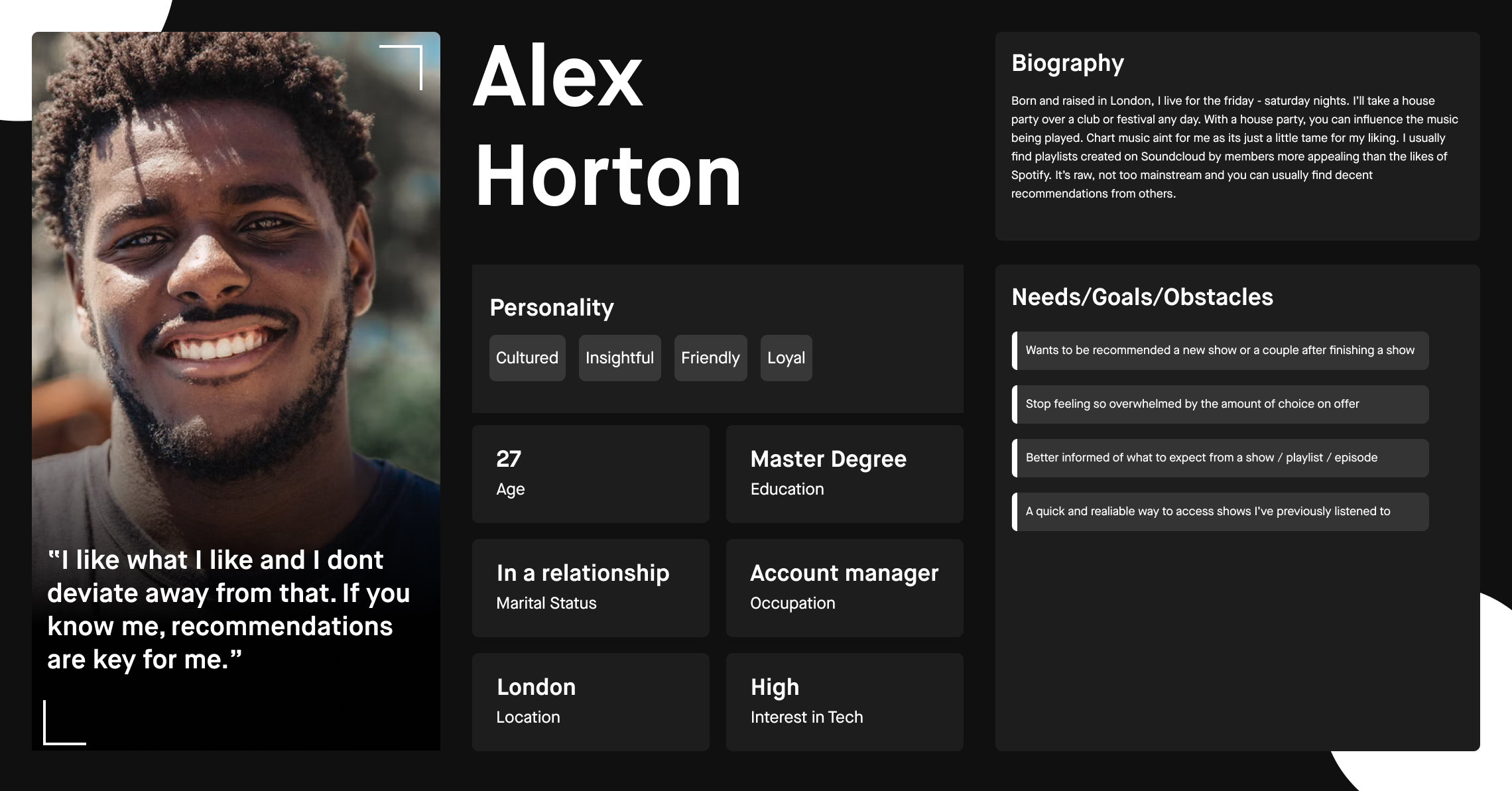
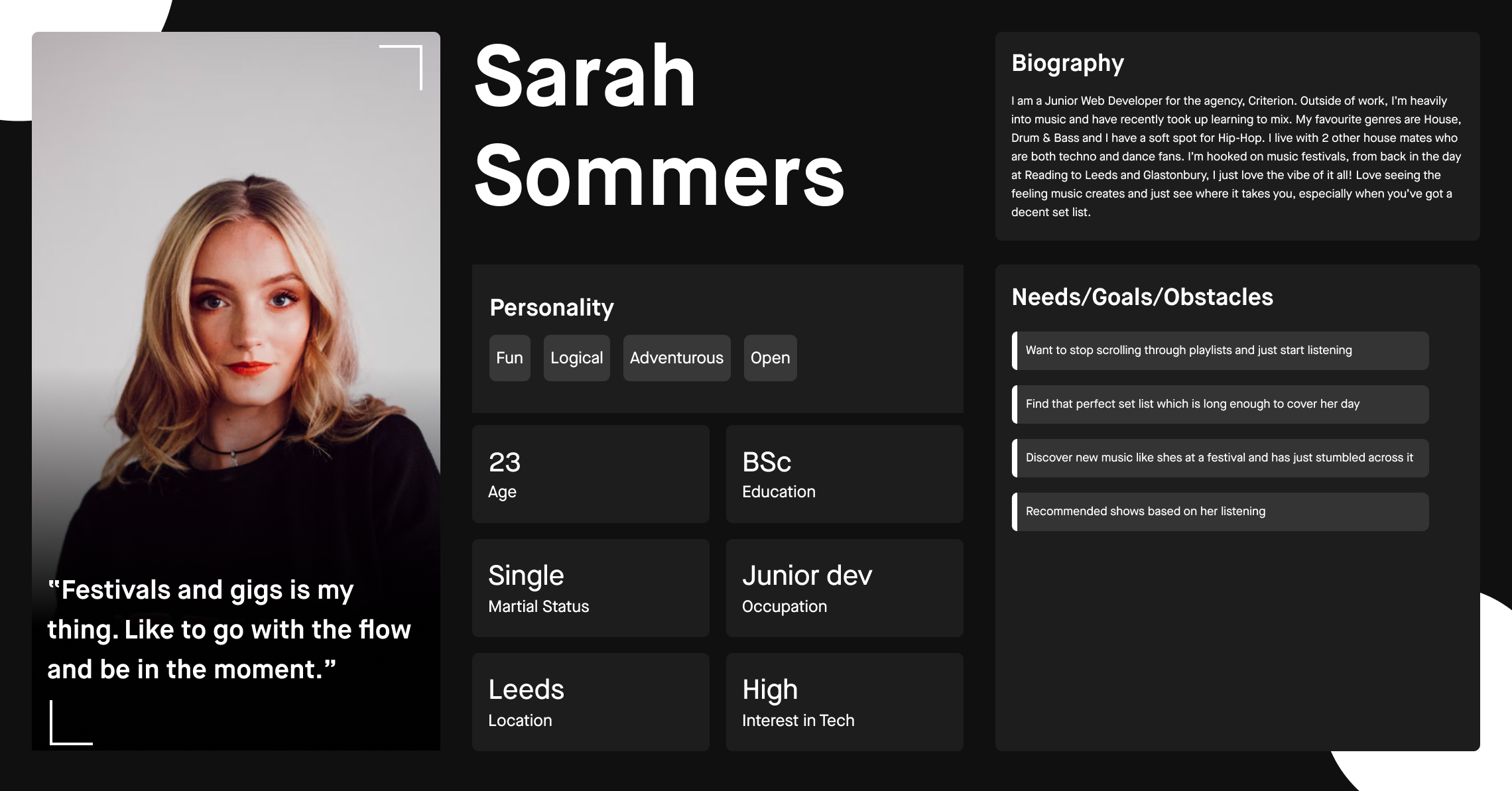
To set a strong foundation for Keakie’s product experience, I collaborated closely with the wider product, engineering, and content teams to define a shared set of design principles. We ran a series of workshops where we brought together stakeholders to align on what makes Keakie unique and how that should translate into the user experience.
We explored competitive benchmarks, and mapped out the core moments that mattered most within the discovery journey. From this, we identified recurring themes; the importance of elevating our curated content, building trust through context, meeting baseline streaming expectations, and keeping the experience simple and intuitive. These themes became more than just design guidelines; they acted as decision-making anchors throughout the project. Whenever we faced difficult trade-offs, whether around navigation patterns, playback flows, or how much metadata to expose, we used these principles to stay aligned on what mattered most to our listeners and to Keakie’s mission.
Since Keakie already had an established website, I focused on adapting its existing visual language rather than reinventing it. The goal wasn’t to introduce a full rebrand or unnecessary new components, but instead to extend the current look and feel into the app while keeping effort and complexity low. When designing the Shows experience, the information hierarchy was critical. Listeners needed to quickly understand who the host is and what the show is about before engaging. Discovery sits at the heart of Keakie’s mission, so presenting the right context at the right time was essential. By prioritising clarity and relevance, we encouraged users to become familiar with a show’s tone and style before deciding to listen, helping them make more confident and informed choices.
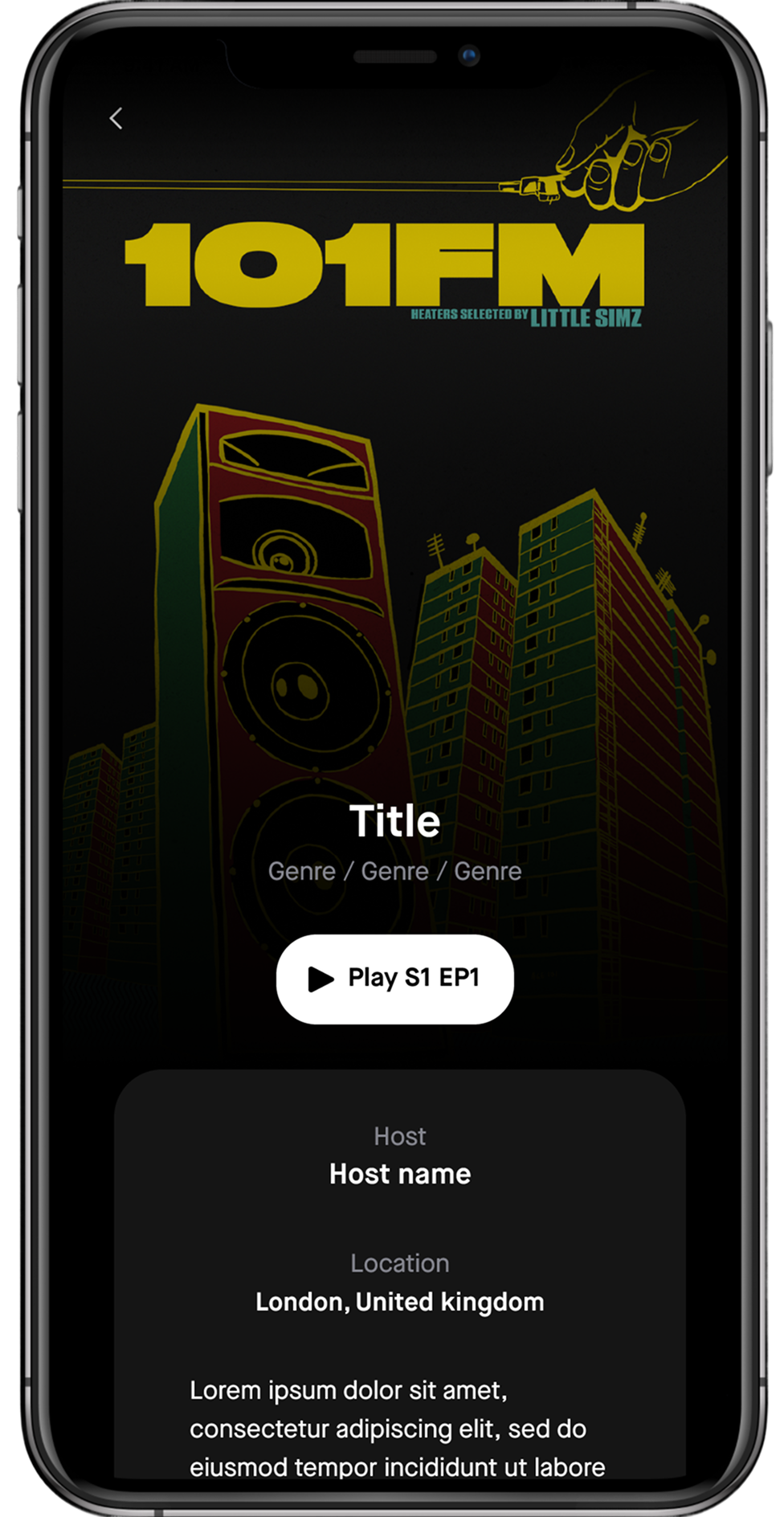

Shows
The Shows page was designed to put content discovery at the heart of the Keakie experience. Each show blends curated music with unique storytelling, so the goal was to elevate the content while keeping the interface simple, familiar, and intuitive. We focused on creating a clear information hierarchy — highlighting key details like show artwork, host info, episode descriptions, and playback controls — while balancing this with contextual cues to help listeners feel informed and confident in their choices.
Discovery
This is the first screen users encounter after logging in, making it a critical moment in shaping how discovery works on Keakie. At this early stage, we relied on genres to guide users, since individual shows would likely be unfamiliar to most. Our goal was to surface relevant content quickly while testing the value of displaying key metadatam, such as whether a show is a mix, radio episode, or podcast alongside its artwork, helping users make informed decisions about what to explore. Keakie’s mission is to represent the underrepresented, with every show curated by humans, not algorithms. While this page lays the foundation for our discovery experience, we also see significant opportunities to evolve it beyond the MVP, for example, by introducing richer recommendations and more personalised pathways. For now, we’ve delivered a simple, focused entry point that lets users dive straight into a show with minimal friction, creating an immediate sense of exploration and engagement.
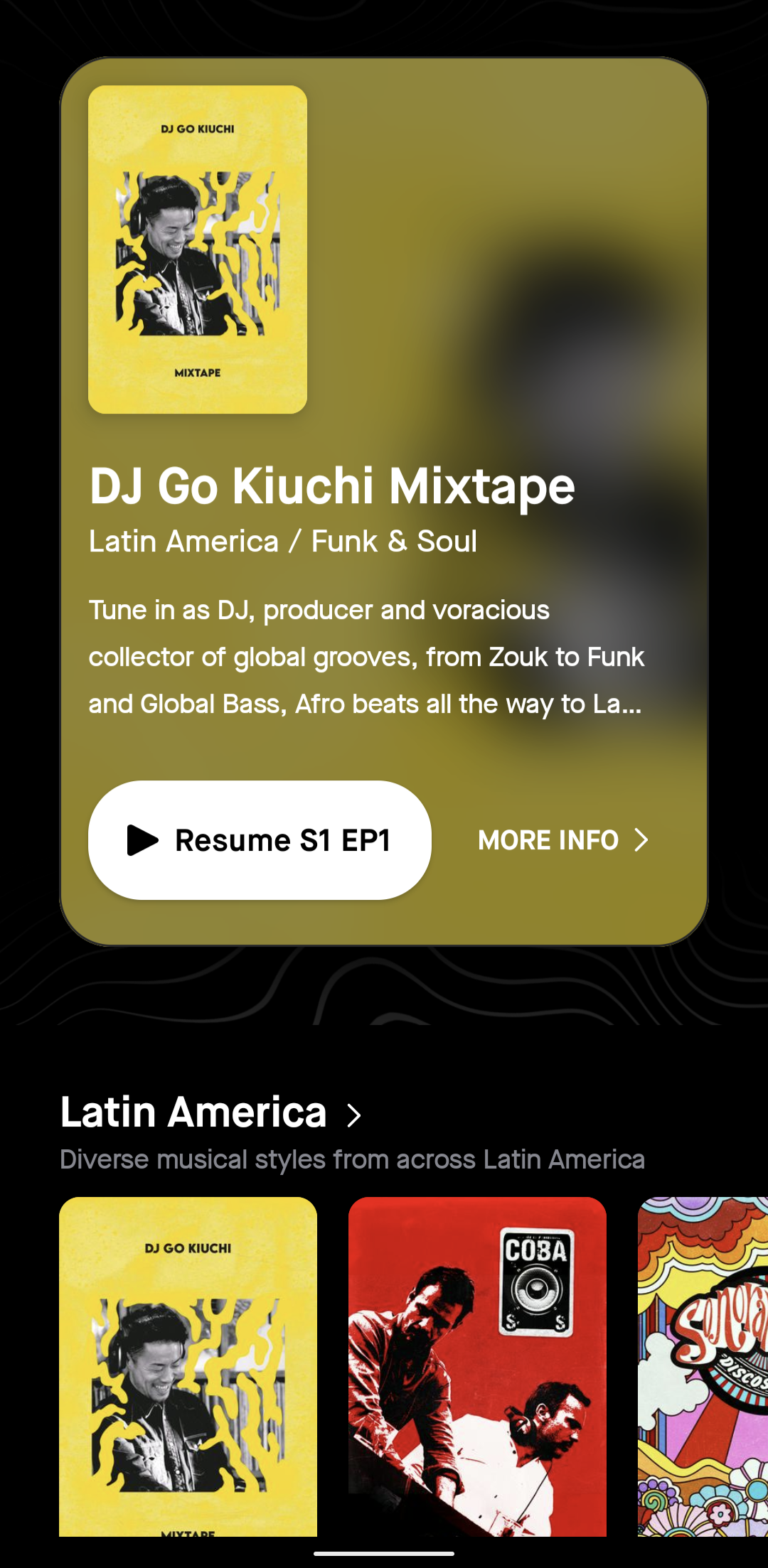
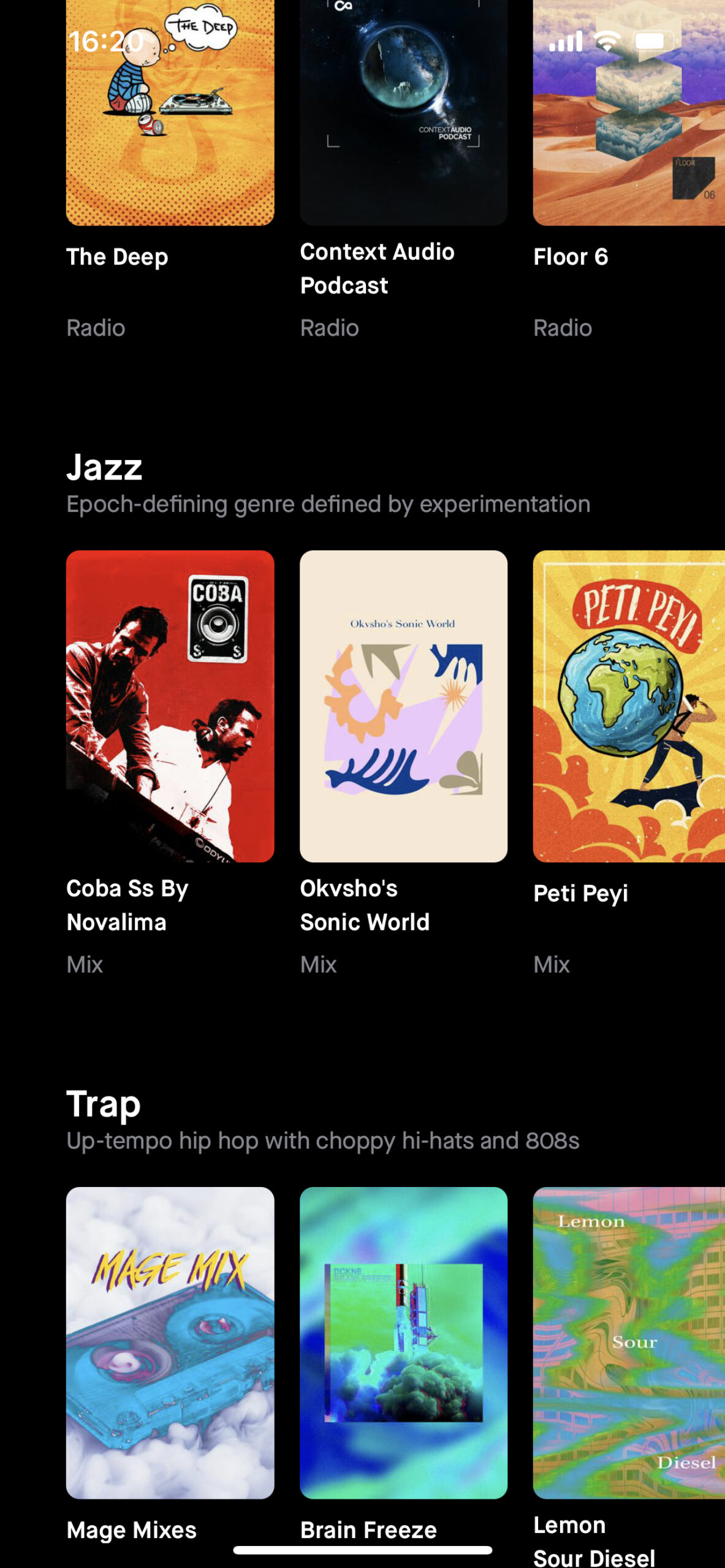
At the top of the page, users are served a recommended show, followed by a curated list of organised genres, each paired with a short description. This helps guide users, especially when they encounter less familiar or underground genres, by giving them just enough context to make confident choices.
Following Hick’s Law, we intentionally limit the number of shows displayed within the initial viewport. By reducing cognitive load, we make it easier for users to browse, decide, and move forward without feeling overwhelmed.
Over time, both the genre order and the shows surfaced dynamically adapt based on the user’s listening habits and engagement with specific genres or sub-genres, creating a more personalised discovery experience.
Unlike other parts of the product, the mini-player came with clear expectations around the information we needed to display. The real challenge was how to present this information in a way that elevates the host and showcases the show, without overwhelming the user or disrupting their browsing experience.We explored over 20 design variations, rapidly iterating to find the right balance between functionality and personality. While we looked at established patterns from other streaming platforms for inspiration, our goal wasn’t to re-invent the wheel — it was to define a mini-player that feels uniquely Keakie. The final design strikes this balance, giving users a familiar, intuitive control while reflecting the platform’s curated, human-first identity.

The full-screen player (FSP) was designed before the mini-player and directly influenced the final variant we launched on the app stores. It provided an opportunity to showcase the host and their content more prominently, with the show artwork subtly integrated into the background to create a sense of immersion without distraction.The biggest challenge was defining the hierarchy of information. We prioritised the episode title as the primary header, reflecting the user’s immediate context they’re listening to a specific episode, not browsing the show catalog.A secondary consideration was the “Now Playing” metadata, which highlights the current track within an episode. Unlike other streaming platforms, we didn’t want this detail to dominate the interface, so we reduced its prominence while ensuring it remained accessible and easy to find for users who value it.
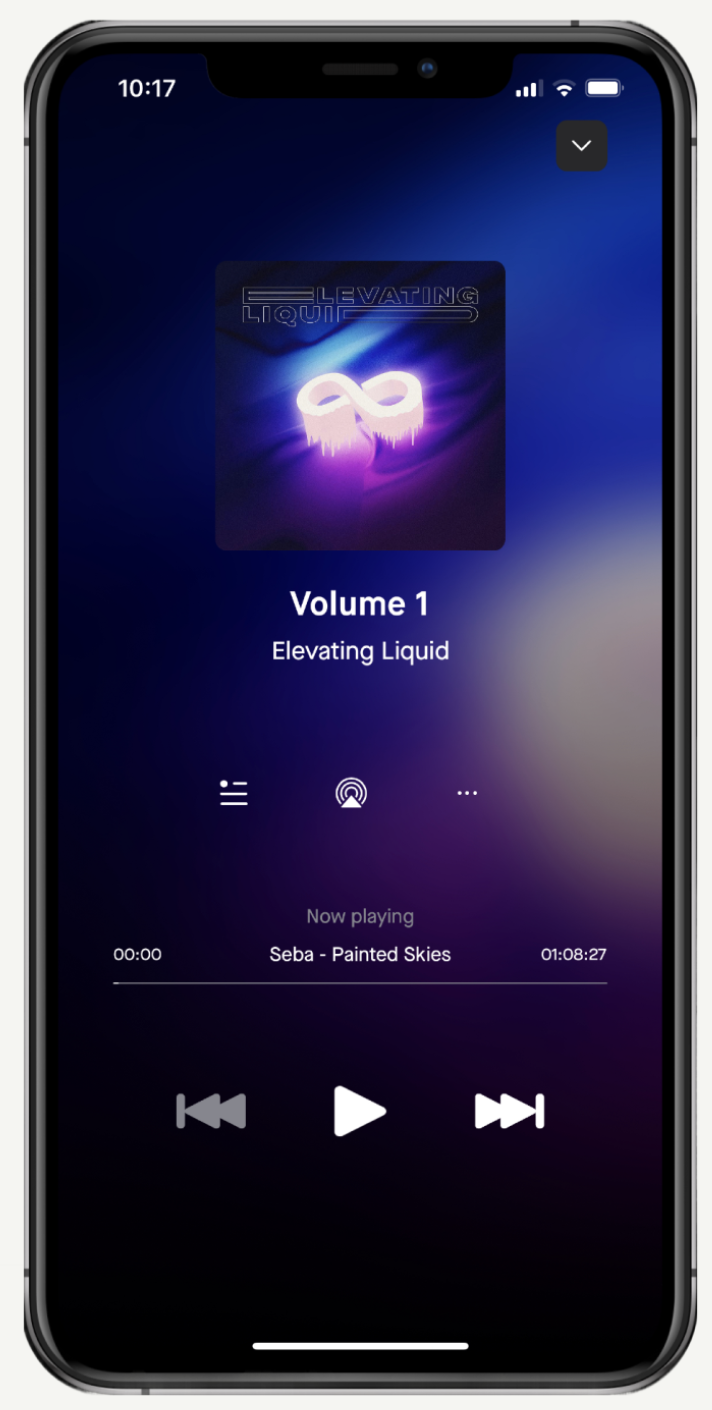

At the top of the page, users are served a recommended show, followed by a curated list of organised genres, each paired with a short description. This helps guide users, especially when they encounter less familiar or underground genres, by giving them just enough context to make confident choices.
Following Hick’s Law, we intentionally limit the number of shows displayed within the initial viewport. By reducing cognitive load, we make it easier for users to browse, decide, and move forward without feeling overwhelmed.
Over time, both the genre order and the shows surfaced dynamically adapt based on the user’s listening habits and engagement with specific genres or sub-genres, creating a more personalised discovery experience.
Keakie was in the early stages, we didn’t yet have an established audience, but we did have access to a valuable network of industry professionals — including hosts, DJs, and music curators who were directly involved in shaping the platform’s content. These individuals became an essential part of our feedback loop.We adopted a lightweight usability testing approach, focusing on rapid feedback rather than formal, time-intensive research. We tested whatever was ready at the time, from low-fidelity wireframes to high-fidelity prototypes which enabled us to validate ideas quickly and uncover mismatches between our internal assumptions and user expectations.Any feedback that wasn’t immediately actionable was placed in a “parking lot” to be revisited later, helping us spot emerging patterns without slowing delivery. This test-and-learn mindset allowed us to iterate faster, keeping us aligned with both the needs of our creators and the long-term vision for the product.
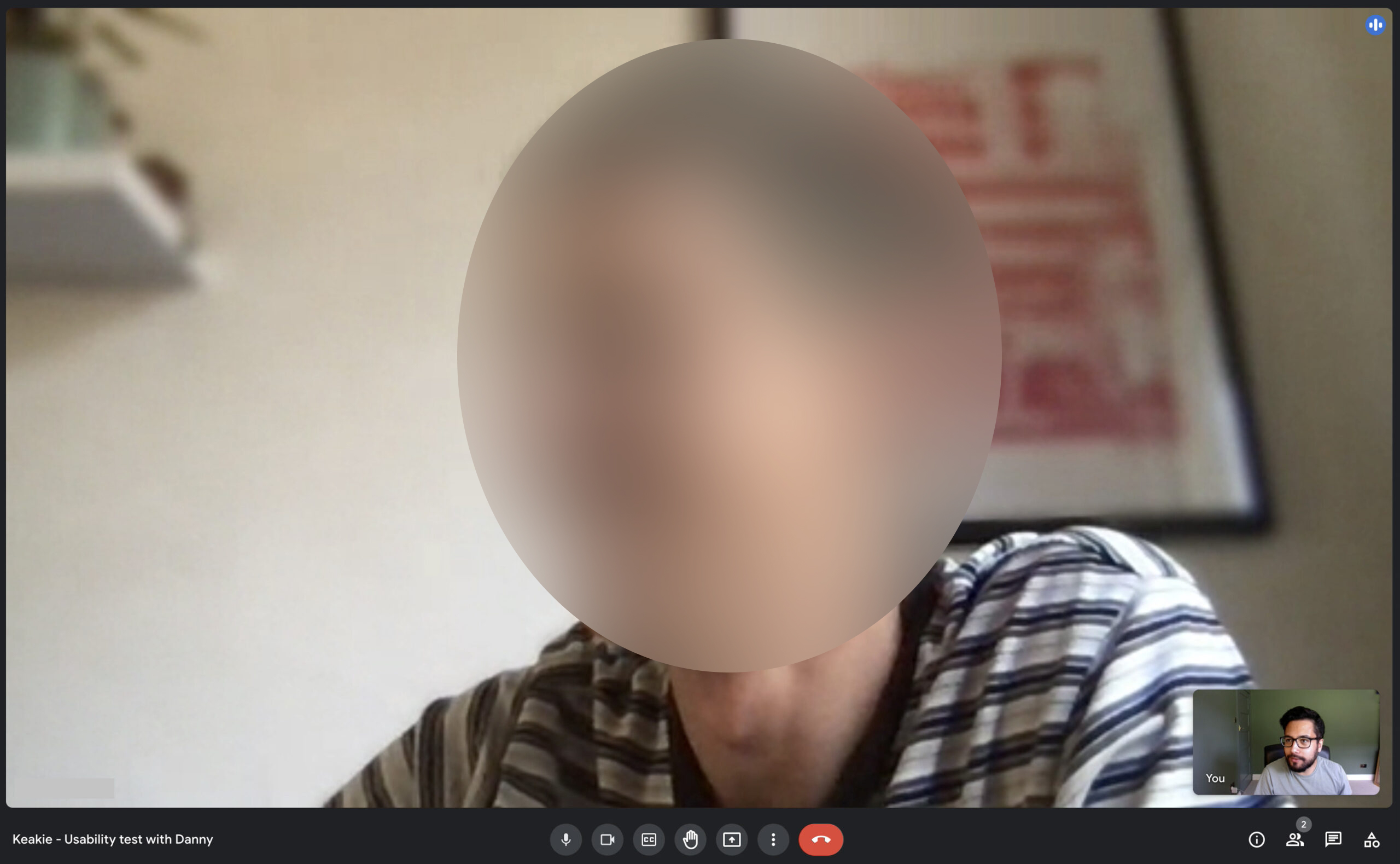

This is just the beginning. We're in the app stores and Keakie is yet to secure the funding it requires to officially launch and drive acquisition. We achieved on delivering an MVP app and we're continously receiving positive and constructive feedback. The app has achieved a 4.8 rating. What I felt went particularly well was being able to continously discuss and work with our leadership team to challenge our thinking and always to be recalling on the problem that we're trying to solve through our deliverables. By working in such close collaboration, we were designing together in theory and was always striving to be user-centric, despite not having the resource or cadence of user testing. At times, we got caught up in the nuances of our outputs which really should have been handled at design crit stages or blocked out for discussion. Nevertheless, we kept moving forwards and successfully delivered the app.